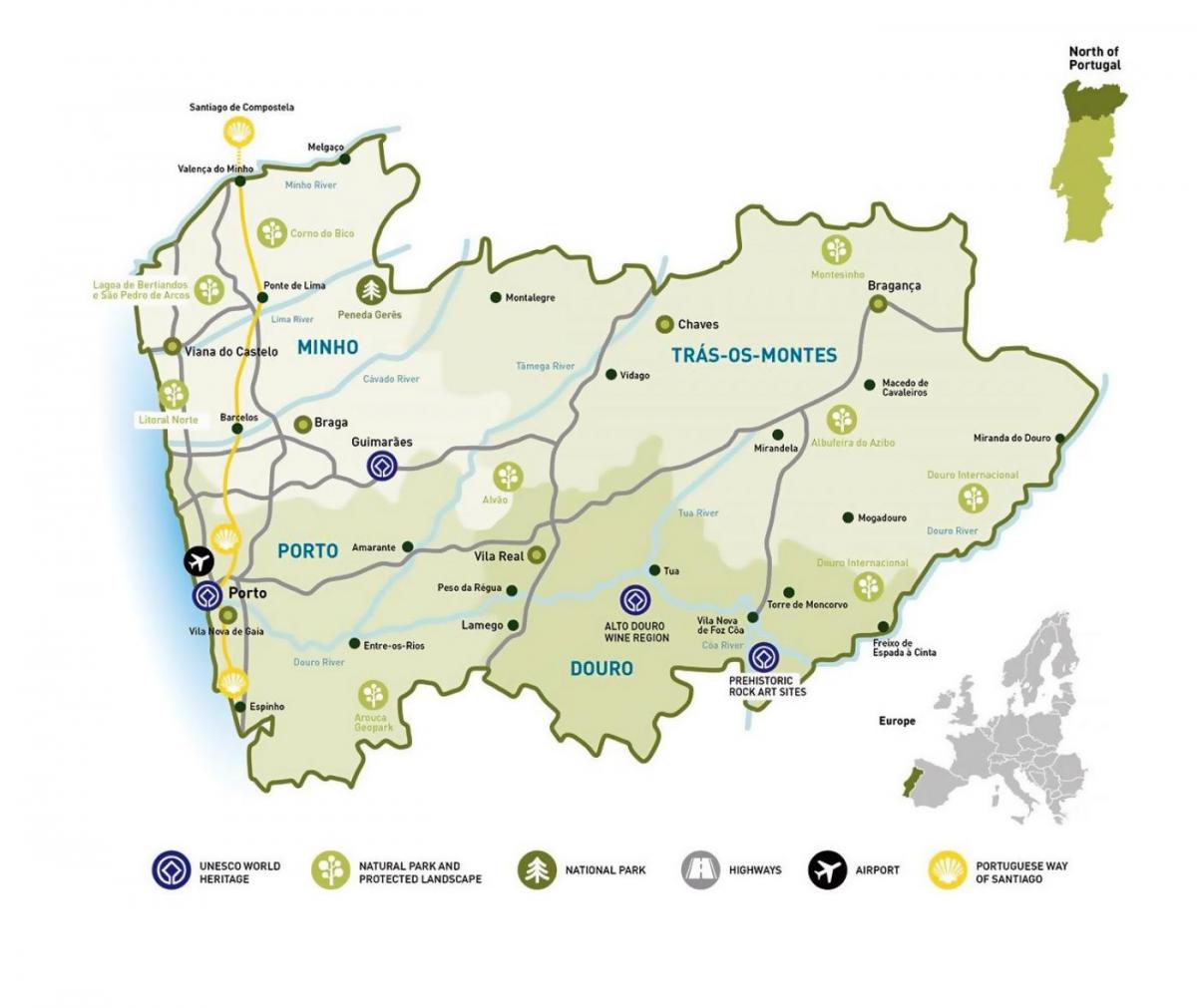search
Northern Portugal map
Map of northern Portugal. Northern Portugal map (Southern Europe - Europe) to print. Northern Portugal map (Southern Europe - Europe) to download. The green and pleasant north of Portugal is a place of traditional merry-making where annual festivals are ablaze with colourful costumes, lively processions and frenetic folk-dancing followed by a feast of fireworks. Northern Portugal is the country most fertile region both in culture and agriculture, set between the Spanish province of Galicia to the north and the Douro Valley to the south as its shown in northern Portugal map. Occupying the country north western corner, the lush green Minho region takes its name from the river that has always marked Portugal’s northern frontier, with its careless, capricious course guarded by fortified towns and citadels en route to the Atlantic. Braga, its capital, is an ancient Celtic city with more than 300 churches. Outside the city, the Baroque splendour of Bom Jesus do Monte is an important pilgrimage shrine.
The northern part of Portugal has mountains for hiking, historic medieval cities to explore, beaches to walk upon and wines to taste. Lamego is an old Baroque village in the Douro region that is famous for making port wines. Lamego is filled with history. Portugal first king, Afonso Henriques, ascended the throne here in the 12th century. If you want a unique nature experience, then the Paiva Walkways (Passadicos do Paiva) is a must-see in northern Portugal. It is a 8-km (5-mile) walk on wooden stairs and suspension bridges that are situated along the Paiva River as you can see in northern Portugal map, considered the prettiest in Portugal. You can travel the world over and not find too many places with houses painted like those you will find in Praia da Costa Nova. The houses in this fishing village near Aveiro are painted in colorful stripes: vibrant red, blue and green accented with white stripes.
Most people associate saints with doing, well, saintly things, like performing miracles. But in Amarante a saint is associated with building a bridge. St. Goncalo is credited with building a stone bridge across the Tamega River in the 12th century. Viana do Castelo as its mentioned in northern Portugal map is an historic port city that was one of the places Portuguese explorers headed to when they returned from their voyages of discovery. Many of Viana do Castelo’s old buildings originated during this time in the 16th century. Sometimes it is fun to go back to the beginning of things, in which case you will want to visit Guimaraes, regarded as the birthplace of Portugal. Here you will find Gothic buildings, a medieval center with narrow cobblestone streets (be sure to wear comfortable walking shoes), pretty squares with outdoor cafes and, of course, lots of history in this traditional town.


